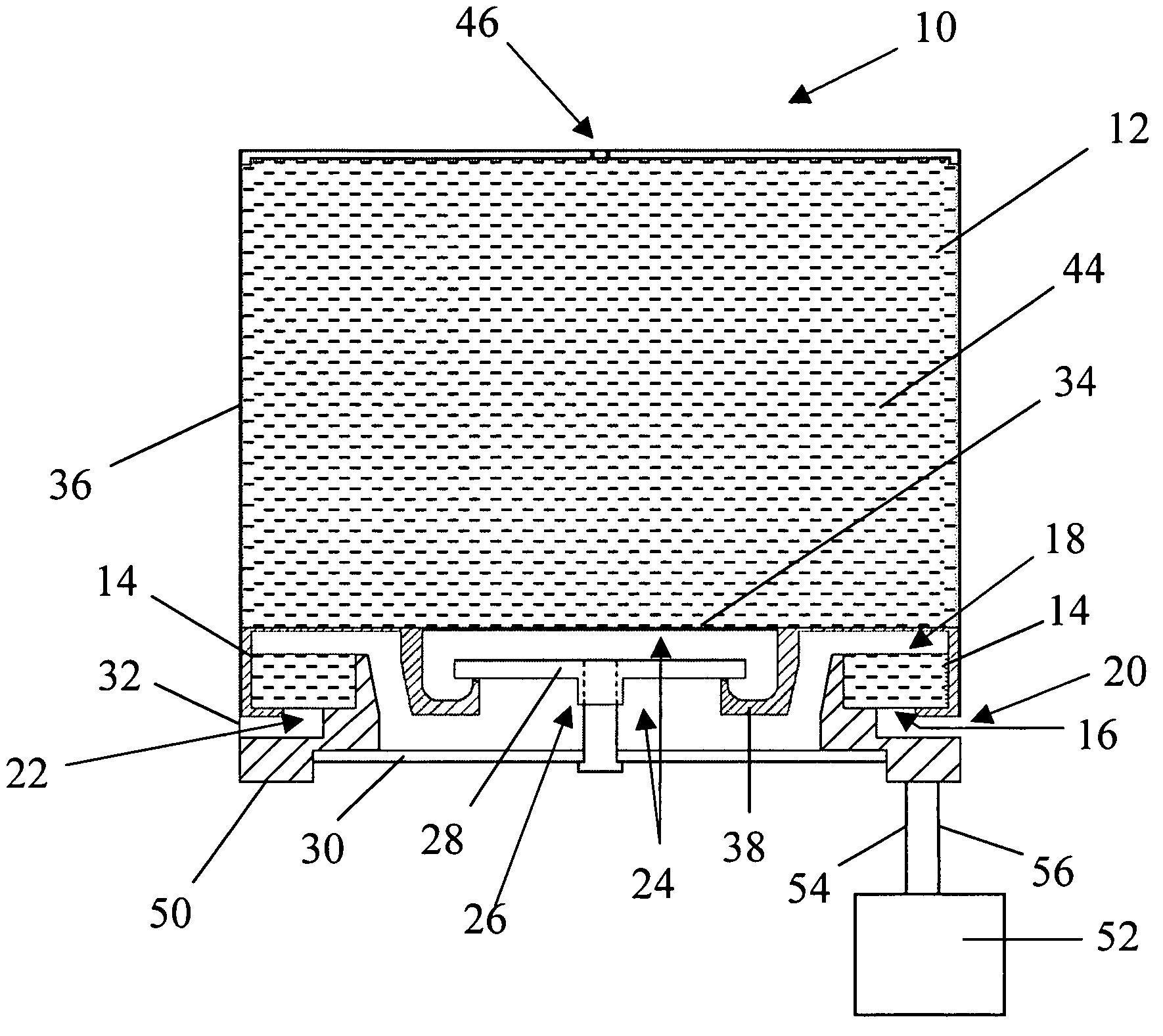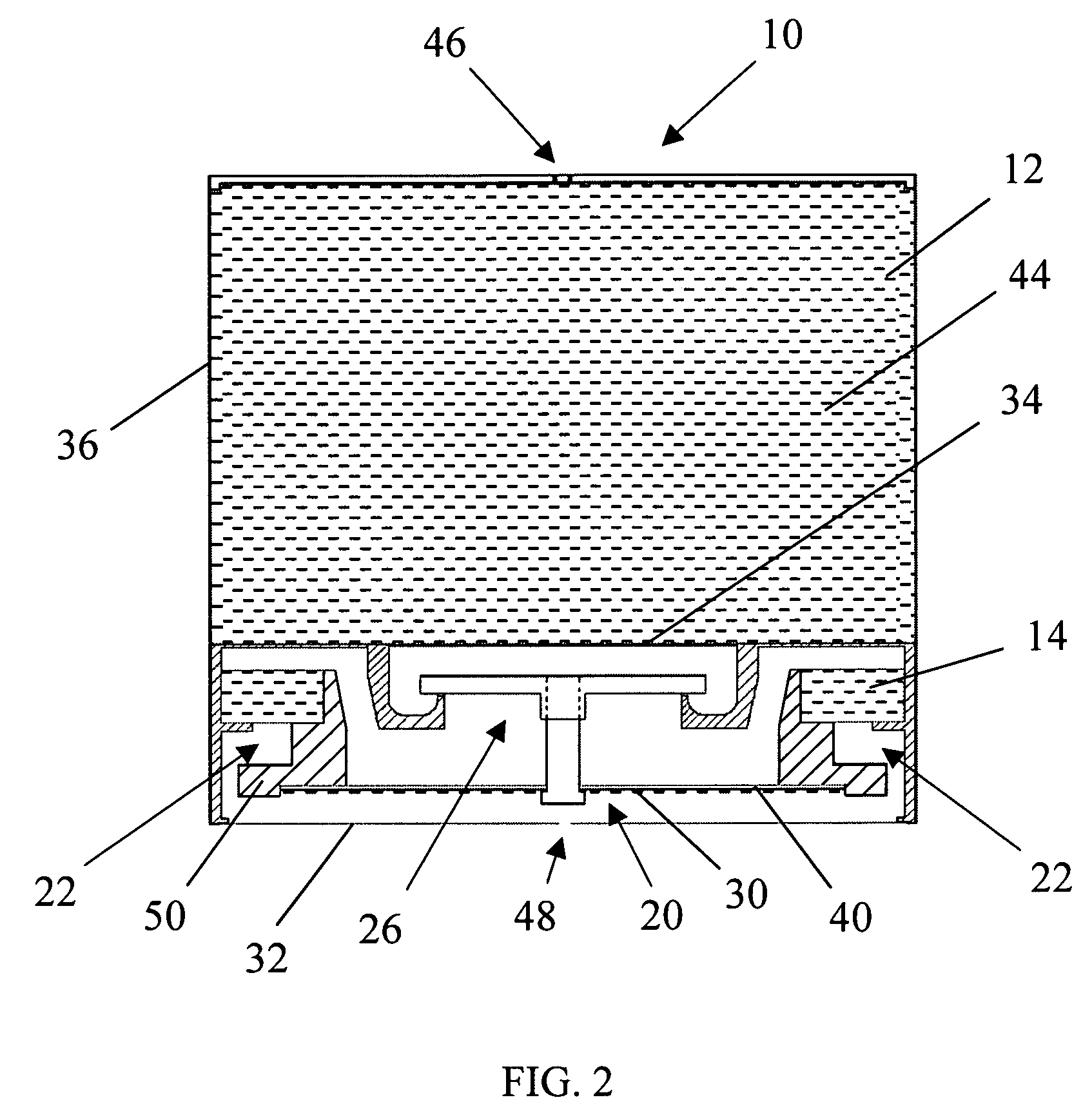Water reclamation in a micropower generator
a micro-power generator and water reclamation technology, applied in the field of waterless power generators, can solve the problems of inconvenient system, high cost, and large space occupation of storage of liquid water fuel
- Summary
- Abstract
- Description
- Claims
- Application Information
AI Technical Summary
Benefits of technology
Problems solved by technology
Method used
Image
Examples
example 1
[0067]A power generator as seen in FIG. 1 was provided and given an initial flush of hydrogen gas. The initial flush evacuated air from the generator cavity, and was thereafter consumed by the fuel cell, producing electricity and byproduct water. Following consumption of this initial hydrogen flush, hydrogen gas was continuously generated internally, as well as electricity. The power output of the generator was measured over time. The results are shown in FIG. 5, which is a plot of the power output of the power generator versus time. Power output was initially set at 50 micro Watts, but was later increased to 170 and then to 210 micro Watts, where it was maintained for the duration of a 30 day test. During the first 20 days of the test, ambient laboratory air relative humidity varied between about 10 to 20 percent. Laboratory air temperature was about 23° C. The initial flush of hydrogen was estimated to have been consumed in about the first day of operation. For this waterless oper...
PUM
| Property | Measurement | Unit |
|---|---|---|
| diffusion coefficient | aaaaa | aaaaa |
| diffusion coefficient | aaaaa | aaaaa |
| diameter | aaaaa | aaaaa |
Abstract
Description
Claims
Application Information
 Login to View More
Login to View More - R&D
- Intellectual Property
- Life Sciences
- Materials
- Tech Scout
- Unparalleled Data Quality
- Higher Quality Content
- 60% Fewer Hallucinations
Browse by: Latest US Patents, China's latest patents, Technical Efficacy Thesaurus, Application Domain, Technology Topic, Popular Technical Reports.
© 2025 PatSnap. All rights reserved.Legal|Privacy policy|Modern Slavery Act Transparency Statement|Sitemap|About US| Contact US: help@patsnap.com



